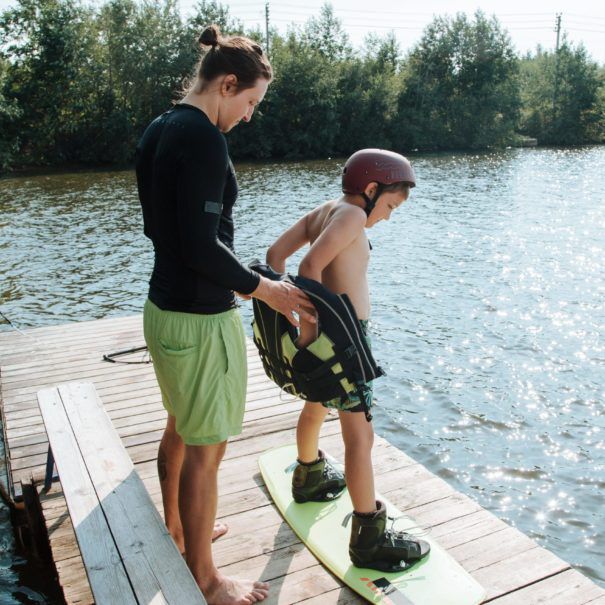Tips for Choosing the Right PFD for Your Child

Safety should always be the first priority when doing anything involving your child and water. Whether you’re going swimming or enjoying a water sport, you need to make sure your child has the right Coast Guard approved personal flotation device (PFD). So what goes into choosing the right PFD?
Size and Features
Size is the first thing to start with when choosing a PFD. PFDs for kids come in three sizes: infant, child, and youth. Unlike PFDs for adults, which are chosen based on chest size, PFDs for children are sized based on weight. Infant PFDs are intended for children 8-30 pounds. Child PFDs are intended for children 30-50 pounds. Youth PFDs are intended for children 50-90 pounds. For infants and children, choose PFDs that have features including padded head support, a grab handle, and a crotch strap. Youth PFDs are designed the same as adult PFDs and have the same features.
Type
There are five types of PFDs: offshore life jackets, near-shore vests, floatation aids, throwable devices, and special-use devices (types 1-5 respectively). For children and youth, use a type 3, or flotation aid, PFD. Flotation aids make it easy to put yourself in a face-up position, though you may have to tilt your head back to avoid going face-down. Infant devices are more typically type 2, or near-shore vests. Some of these vests will turn wearers face-up for them, though not all do that. Both type 2 and 3 PFDs are good for environments where there’s a good chance of a fast rescue if one is needed.
Fit
PFDs should always fit snuggly. To test the fit of your child’s PFD, secure your child in the PFD and then pick them up by the shoulders of the PFD. If the PFD is fitted properly, the chin and ears won’t slip through. Remember that some children like how snuggly PFDs sometimes fit. Help them get familiar with their PFD and consider offering a reward for wearing it the whole time if your child needs some extra encouragement.
The right PFD should be Coast Guard approved and can make a real difference in how safe your child is in the water. Choosing the right PFD reduces the risk of drowning. It’s not enough to simply grab whatever PFD is close to hand. If it is to work properly, it must be the right size, type, and fit for your child. Out of all the water equipment you could get for your child, the right PFD is arguably the one piece that can make the biggest difference.
Water safety and drowning prevention are essential for any swimmer. Click here to see SwimJim’s 10 Golden Rules for Water Safety and Drowning Prevention.
The post Tips for Choosing the Right PFD for Your Child appeared first on Swim Jim.







